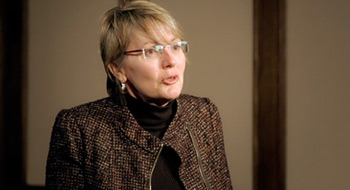
Last October, the U.K. experienced its biggest pension provision shakeup in generations when state legislation required employers to roll out auto-enrollment provisions for all eligible employees.
M&S (Marks & Spencer), one of Britain’s best-loved retail brands that focuses on women’s apparel and general goods, was one of the early auto-enrollment cohorts to follow suit in November 2012. Every employee in each of its 703 U.K. stores over age 22 and with earnings in excess of £8,105 would be automatically enrolled in the company’s default pension plan. The arrangement was set at 3% for newly enrolled employees; M&S matched the contribution with 6% paid into the default investment fund.
Capping contributions
According to Julie Parker-Welch, pension strategy reward manager with M&S, the decision to cap levels of contribution had a lot to do with cost control since the firm suddenly had to corral a lot of people into the scheme. “That’s off our bottom line,” said Parker-Welch. “If we lose money from putting more into pensions, we’re going to have to sell a lot more knickers, and that’s tough at the moment—it’s a tough environment.”
The firm’s legacy DB scheme has been closed to new entrants since 2002, but the DC plan that replaced it had a take-up rate of 20%, which was not dissimilar from other retailers, said Parker-Welch. M&S employees could contribute between 3% and 6%, while the employer would pay between 6% and 12%. The scheme also included life insurance of four times an employee’s salary. Still, the company had 45,000 employees who were not enrolled in a pension plan at all.
M&S turned to Legal & General, a leading fund manager known for passive management, to run its new scheme—a DC master trust—because it offered third-party asset management, administration and governance, and it would deal with the U.K. regulator. Moreover, the deal allowed M&S a measure of flexibility, such as retaining control over contribution rates and investment decisions.
The annual management charge for administering the scheme is 30 basis points, said Parker-Welch, but since the expenses are met from member charges, M&S incurs no costs for running the scheme. “That’s what’s important to me as a business. I want to sell; I want to make money. My business is about increasing shareholder return. I do what I need to do for my employees. I’m not a charitable institution.”
Auto-enrollment process
M&S managed to transfer about 10,000 people and £160 million ($246.8 million) into the new scheme. The auto-enrollment process took eight weeks, which was followed by a full independent audit to ensure its legality.
The biggest challenge with the auto-enrollment process was communication. “We needed to meet legal requirements, which would make for long-winded statements and that would turn people off,” recalls Parker-Welch. “The more words, the less people read. Jargon was a real problem….People just don’t even understand the word pension and what it really means.”
M&S wrote to 37,000 employees on three occasions to let them know that funds would be deducted from their accounts starting in February 2013. M&S relied on a variety of media that could communicate consistent and clear messaging that the company’s intentions to auto-enrol employees was essential. In the end, the firm captured them all.
Plotting ahead, M&S will move with the changing needs of the times, such as periodically reviewing its default. “The world changes, and what’s appropriate now may not be appropriate in 10 months’ time—let alone five years’ time.”
Watch more videos:

